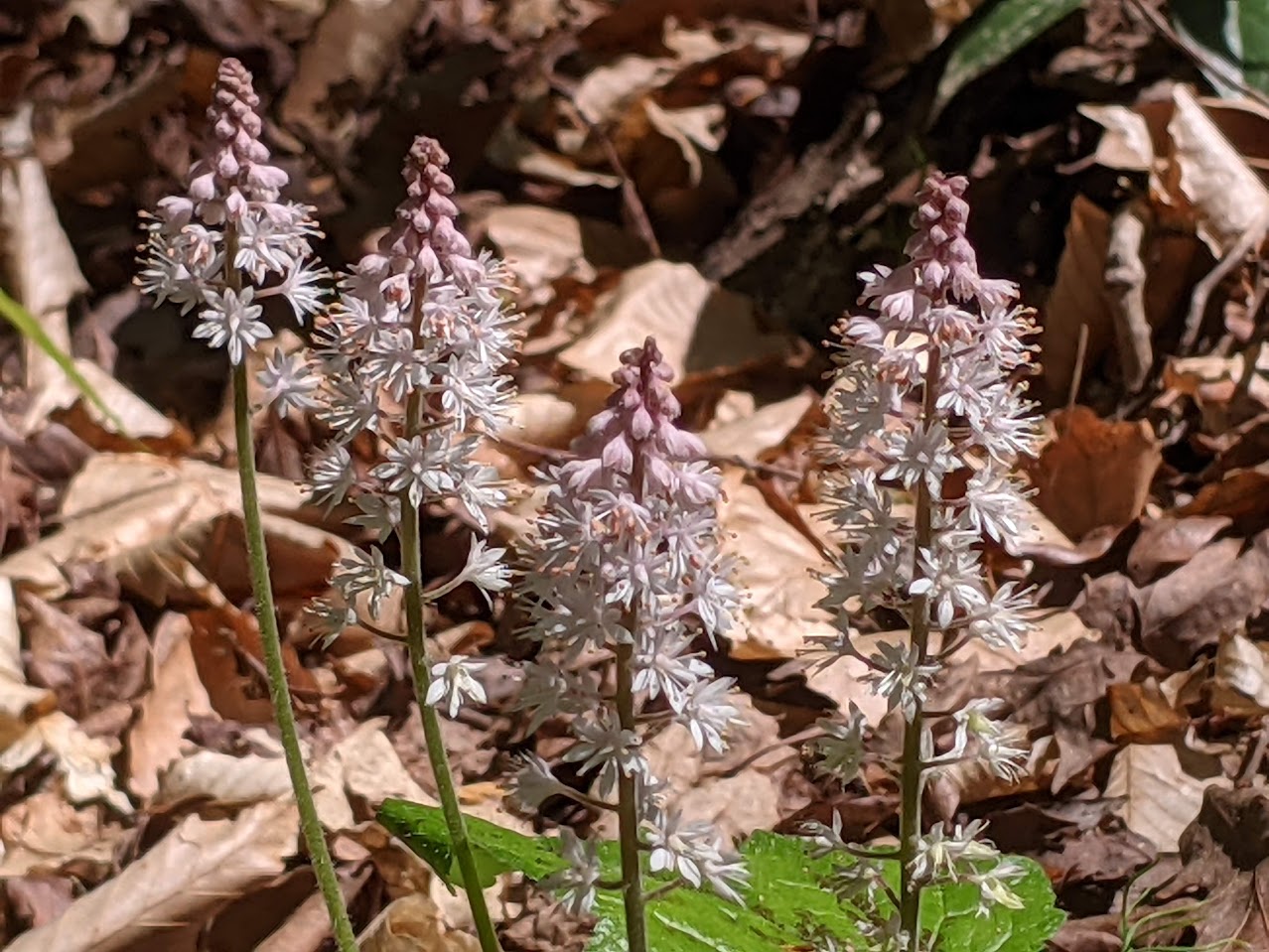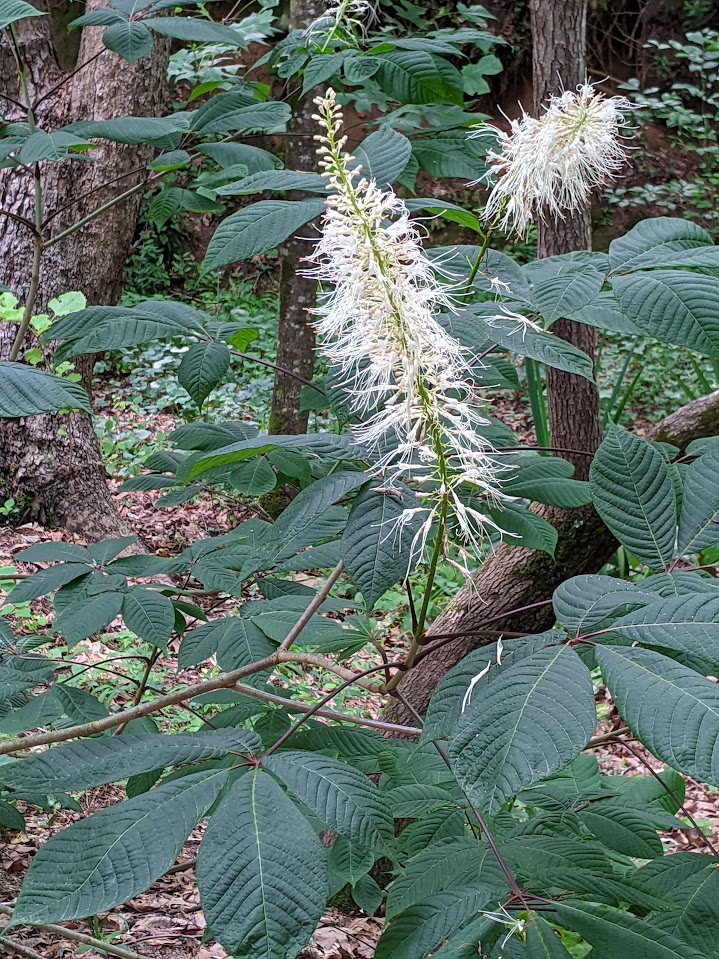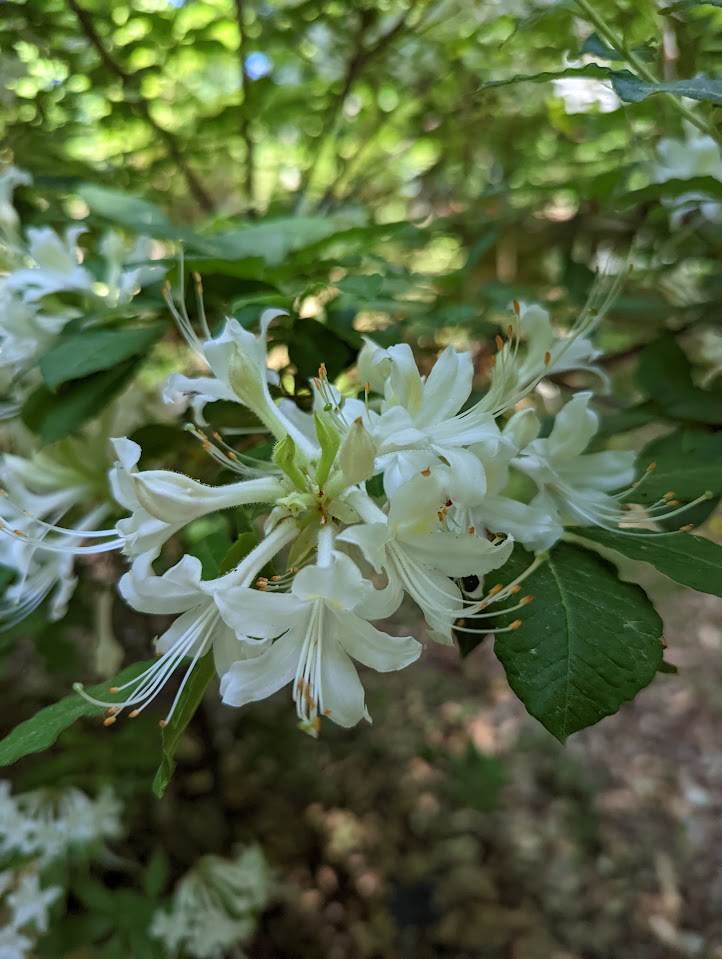We live in such a hot and humid place that shade gardens can provide a welcome respite. I know that in the summer months my favorite place in the Garden to visit the cove forest habitats on the Natural Heritage Trail. You can recreate this type of habitat in your garden if you have a shady spot. As with any gardening endeavor, ensuring you have the right conditions for your plants is a must. Once you are certain of your soil type, moisture levels and pH the fun starts with choosing plants. How to get a Clemson Extension soil test.

Christmas fern

Mountain laurel
For year-round interest, and to provide a textured background to other plants, evergreen plants are an excellent choice for the shade garden. Try robust Christmas fern (Polystichum acrostichoides) and the more delicate fronds of ebony spleenwort (Asplenium-platyneuron), the former thrives in organically rich moist soils, the latter in drier, rockier locations. In dry spots, the flowering evergreen pipsissewa (Chimaphila maculata) will spread via rhizomes across the forest floor and produce tiny fragrant white flowers in the summer. In more acidic soils, evergreen members of the heath family including mountain laurel, rhododendron and doghobble have the additional benefit of he beautiful flowers they produce.

Trout lily

Foam flower (Tiarella cordifolia)
Spring is an exciting time in the woodland garden as spring ephemerals and other herbaceous plants emerge. One of the earliest is trout lily (Erythronium spp.) Their dappled leaves provide interest from early February until the trees leaf out and their yellow flowers are a lovely bonus. The flowers are an important source of nourishment for our early emerging native bees, including the specialist trout lily mining bee, bumble and sweat bees. Bee flies and pollen eating beetles also visit them. Foam flower (Tiarella cordifolia) flowers a little later in the season, late April to early May. When planted in drifts the flower spikes create a visual foamy mist. After these, there are a panoply of flowering plants to choose from but make sure you buy from a legitimate grower.

Bottlebrush buckeye

Red Hills Azalea
In summer, bottlebrush buckeye (Aesculus parviflora) provides a similar look to foam flower, but on a much larger scale. This deciduous shrub grows to be 8-12 feet tall and 8-15 feet wide. When flowering this shrub is show-stopping! It is covered with tall panicles of small white tubular flowers, each sporting many protruding pinkish-red anthers on the end of long stamens. Other deciduous shrubs that add excitement to the shaded landscape are our native azaleas. Last year, I discovered the intensely fragrant Red Hills Azalea (Rhododendron colemanii) but there are many other native azaleas that can add splashes of color to the landscape.
The options for shade gardening are exciting. There are so many plants to add texture, color, structure and more to your garden. When you create a shade garden with native plants you are creating your own haven while increasing biodiversity.
~ Sue Watts, Educational Program coordinator
